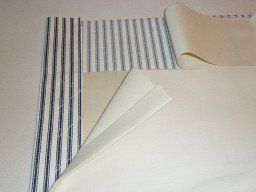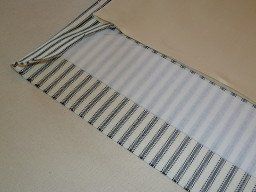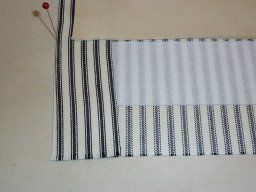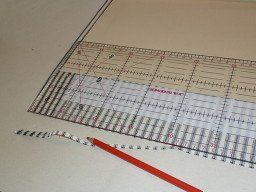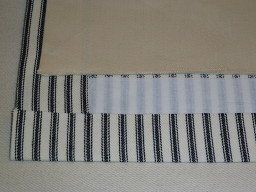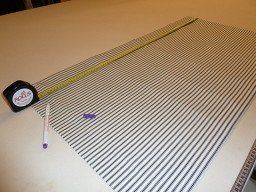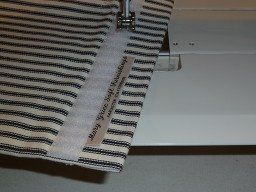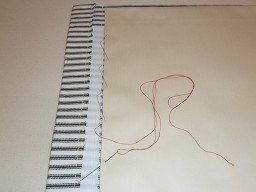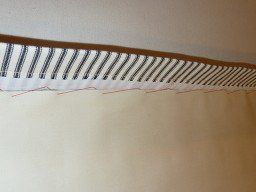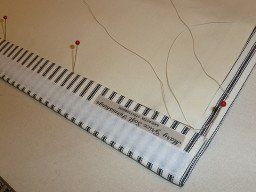Roman Blind
Faced Heading
Tutorial
1
Prepare your face fabric and lining in the normal way. You should allow around 9 cm (3.5") of face fabric at the top of the blind to make the facing. Trim the lining and any interlining to the EXACT finished drop of the blind.
2
Cut a 5 cm (2") wide strip of single sided fusible buckram, half a centimetre smaller than the finished width of the blind. Place the buckram with fusible side facing the wrong side of the excess face fabric at the top of the blind.
4
Use a hot iron to fuse the buckram in place. Fold the side hems so that they taper inwards very slightly and press.
5
There should be 4 cm (1.5") of excess face fabric above the buckram. Trim if necessary, using a clear acrylic template to quickly measure and mark.
7
Now turn the blind over so that the right side is facing you. Measure up from the bottom of the blind and mark the finished drop of the blind PLUS 1 cm (0.4"). Use a fading marker or chalk marker to draw a line across the measured points. (This line will not be seen on the right side of the blind).
8
Machine stitch loop Velcro so that its top edge is exactly on this measured line. You are sewing through the Velcro, face fabric top flap and buckram here, not the face of the blind itself.
1o
With the wrong side facing you, starting at one side of the blind with a strong thread, make large stitches catching the top raw edges of the lining and interlining to the top row of machine stitching that you used for the Velcro. This prevents the top edge of the lining and interlining from sagging inside the blind.
11
Use one continuous thread for this, so that you can gently pull on it when you get to the other side, thereby helping the facing to lie flat.
This produces a heading which is has no visible stitches on the face side, and yet is stable and firm enough not to sag or roll forward.
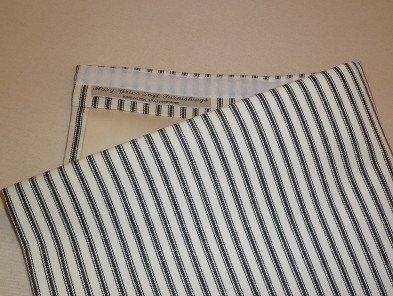
To calculate the ideal rod positions for perfect cascading or standard folds on Roman Blinds, click here

